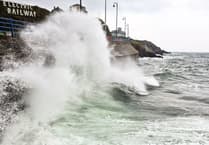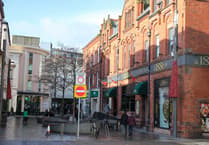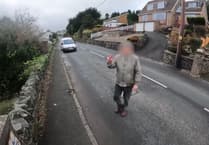A number of rooms in five Isle of Man schools have been found to have above-average radon levels.
The exceedances were found at Kewaigue, Scoill Vallajeelt, St Johns, St Thomas’ Church of England, St Ninian’s and UCM where staff, students, and parents have been informed.
All state-run schools and University College Isle of Man (UCM) underwent testing this summer as part of the Isle of Man Government’s legal obligation to limit people’s exposure to radon.
The naturally occurring radioactive gas is present in the air of all buildings at varying levels and comes from naturally occurring uranium in the ground and some building materials, but there are no immediate health concerns.
The Department of Environment, Food and Agriculture (DEFA) was supported by the UK Health Security Agency (UKHSA) on the project that saw small detectors placed in around 500 ground-floor and basement rooms.
Upon analysing the data, the UKHSA informed the Government that the vast majority (97%) of rooms were well within the legal limit. Issues were found in 14 rooms, including a classroom, staff room and caretaker’s office.
The exceedances were found at Kewaigue, Scoill Vallajeelt, St Johns, St Thomas’ Church of England, St Ninian’s and UCM where staff, students, and parents have been informed.
The Department for Education, Sport, and Culture (DESC) has appointed a qualified radon expert to devise an action plan, which will involve minor works in affected rooms. Upon completion, the affected schools will be resurveyed.
Julie Edge MHK, Minister for Education Sport and Culture, said: ‘The department is committed to upholding the highest standards of health and safety.
'I want to reassure students, parents and staff that the risk in the school environment is low and the early appointment of a qualified radon expert demonstrates we are taking immediate action.'
Clare Barber MHK, Minister for Environment, Food, and Agriculture added: ‘The tests are part of a series of radon actions to ensure the Government is taking necessary steps to limit exposure, aligning with practices in the rest of the British Isles.
‘No one can predict the level in an individual building, so it is better to know and take appropriate mitigation steps. This is the first part of an ongoing programme to assess the levels of radon in our built environment.’
A spokesman for the UKHSA said: ‘The results are similar to many other schools and workplaces tested across the UK, and established procedures should be followed.’
The UKHSA advised the DESC that affected schools should continue operating as normal.
Interim Director of Public Health, Professor Hugo van Woerden, said: ‘While short-term exposure to radon in schools might not immediately pose significant health risks, repeated or prolonged exposure to high levels, over an extended period, could potentially have adverse health effects.
‘Health organisations like the World Health Organization (WHO) and the Environmental Protection Agency (EPA) have established guidelines and recommendations for acceptable levels in indoor environments, so it is essential for schools and public buildings to be regularly tested and action taken where necessary to ensure the health and safety of the people that use them.’




